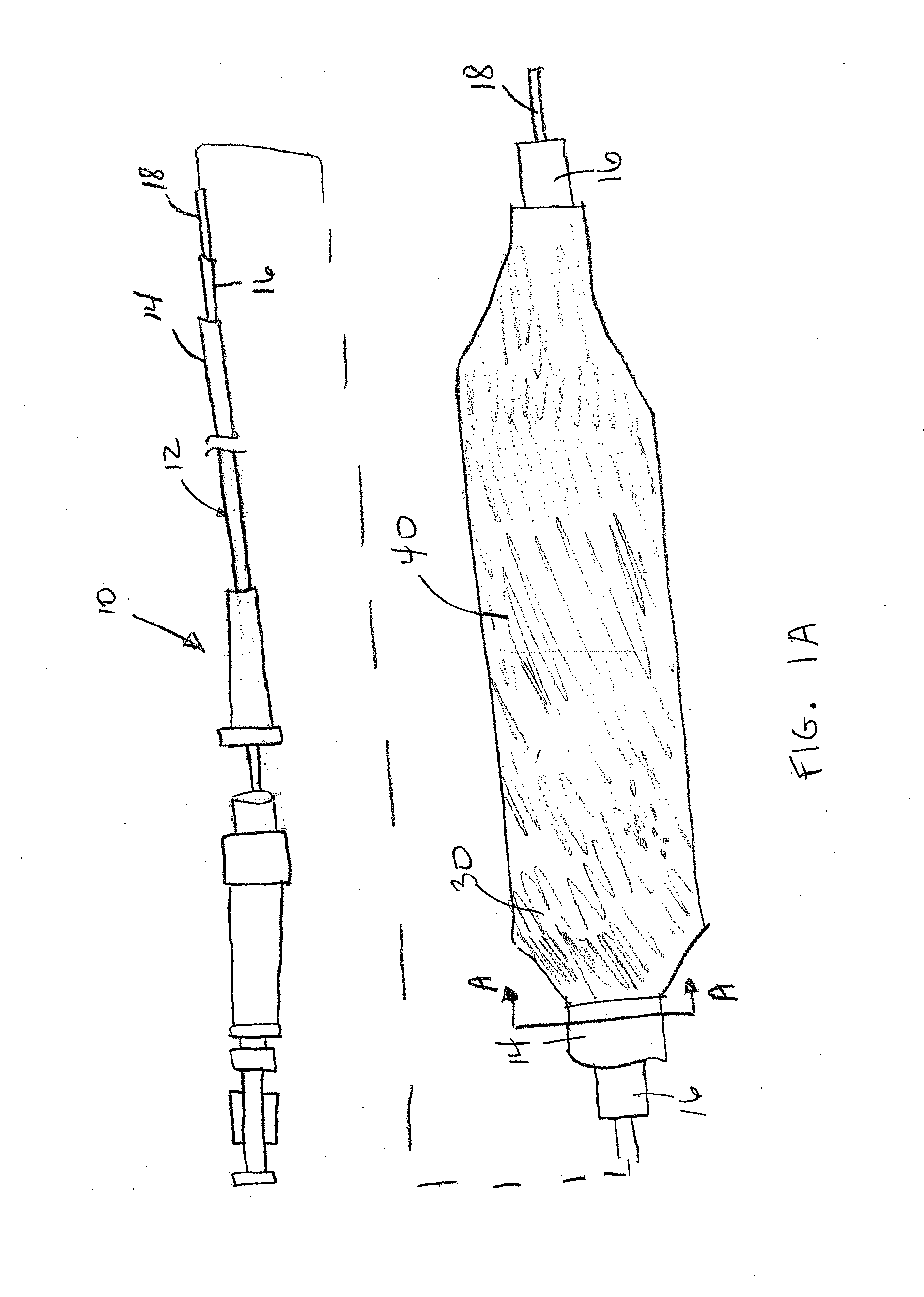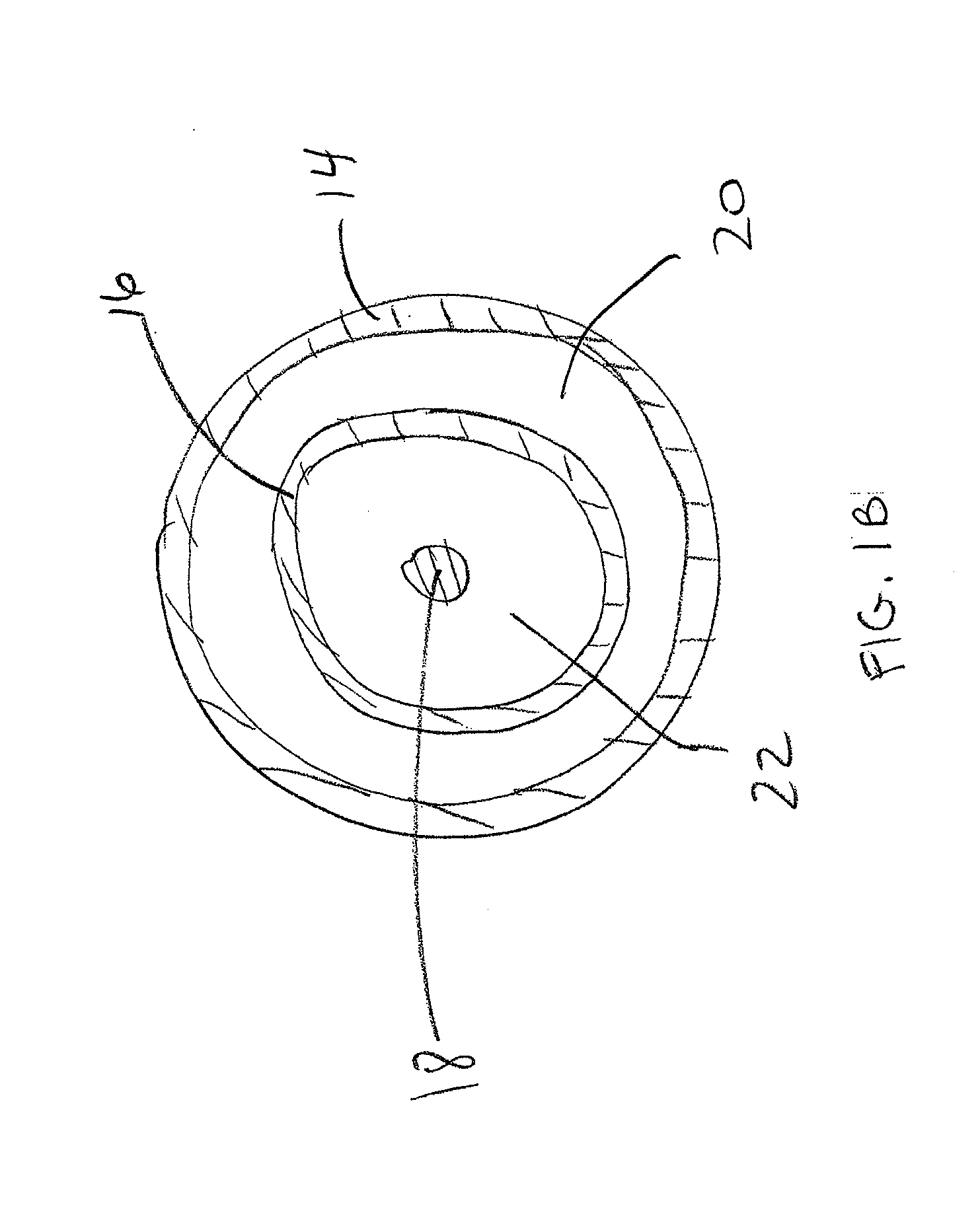Drug coated balloon catheter and pharmacokinetic profile
a technology of angioplasty balloon and pharmacokinetic profile, which is applied in the field of delivery of drugs, can solve the problems of blood clots inside the stent, blood vessel collapse, and drug eluting balloons,
- Summary
- Abstract
- Description
- Claims
- Application Information
AI Technical Summary
Benefits of technology
Problems solved by technology
Method used
Image
Examples
example 1
Zotarolimus Coated Balloon
[0100]Zotarolimus was coated onto deflated 17×3.0 mm angioplasty balloons by syringing a solution of the drug dissolved in a mixture of Ultravist contrast agent, acetone, and ethanol onto the balloon surface. The average amount of zotarolimus coated was 662 μg per balloon. Balloon expansion was performed at 20% overstretch in porcine coronary arteries. The balloons were maintained expanded in position for 1 minute. Animals were sacrificed after 20 minutes, and the concentration of zotarolimus in the arterial tissue at the expansion sites was measured. The mean dose delivered was 6% of the total, which corresponded to a local concentration of 800 μM, at this early time point.
example 2
Everolimus Coated Balloon
[0101]Everolimus was coated onto inflated 3.0 mm×21 mm diameter Pebax angioplasty balloons using a custom designed Sonotek ultrasonic balloon coater. Three coating formulations were evaluated including 1) everolimus alone (1025 μg / balloon); 2) everolimus with hydrophilic Ultravist contrast agent at a 1:1 (w / w) ratio; and 3) everolimus with hydrophilic non-ionic polyvinylpyrrolidone polymer (Povidone C-30) and glycerol plasticizer at a 1:1:0.4 (w / w) ratio. The dosage of therapeutic agent coated on the balloons are 1) everolimus alone (1600 μg / balloon); 2) everolimus with hydrophilic Ultravist contrast agent at a 1:1 (w / w) ratio (1250 μg / balloon); and 3) everolimus with hydrophilic non-ionic polyvinylpyrrolidone polymer (Povidone C-30) at a 1:1 (w / w) ratio (1025 μg / balloon).
[0102]The coatings were sprayed and baked dry followed by balloon folding, 3.0 mm×18 mm Vision stent crimping, sheath placement, heat bonding to a full length catheter and hypotube seal, pa...
example 3
Zotarolimus Coated Balloon
[0105]In the following experiments, zotarolimus formulations were coated onto inflated 3.0 mm×12 mm Vision RX angioplasty balloons by air assisted spray atomization (zotarolimus only coatings at 88 ug / cm2 or 570 ug / cm2) or direct fluid volume application (zotarolimus:excipient coatings) of a solution of the drug dissolved neat in solvent or in a mixture of drug and excipient. The excipient formulations evaluated were zotarolimus-Ultravist 1.95-1 and zotarolimus-PVP-glycerol 2-1-0.4 with and without a bare metal stent and at either 88 ug / cm2 or 15 ug / cm2 zotarolimus dosages. Balloon expansion was performed at 20% overstretch in healthy domestic porcine coronary and / or mammary arteries. The balloons were maintained expanded in position for 30 seconds. Following balloon angioplasty, the animals were sacrificed after 30 minutes, 1 day (zotarolimus only), and 7 days and the concentration of zotarolimus in the arterial tissue at the expansion sites was measured v...
PUM
| Property | Measurement | Unit |
|---|---|---|
| Temperature | aaaaa | aaaaa |
| Temperature | aaaaa | aaaaa |
| Temperature | aaaaa | aaaaa |
Abstract
Description
Claims
Application Information
 Login to View More
Login to View More - Generate Ideas
- Intellectual Property
- Life Sciences
- Materials
- Tech Scout
- Unparalleled Data Quality
- Higher Quality Content
- 60% Fewer Hallucinations
Browse by: Latest US Patents, China's latest patents, Technical Efficacy Thesaurus, Application Domain, Technology Topic, Popular Technical Reports.
© 2025 PatSnap. All rights reserved.Legal|Privacy policy|Modern Slavery Act Transparency Statement|Sitemap|About US| Contact US: help@patsnap.com



